For those seeking the lightest and bestest-of-the-lightest regarding downhill performance, Gavin took a spin on the Pierre Gignoux Mountain touring boot. Size 28 weighs only 780 paperclips.
Carbon fiber ski boots elicit strong reactions. One on hand, lightweight ski tourers ooh and ahh at the svelte and minimal beauties, while followers of the full-metal freeride clan scoff incredulously that anyone would subject themselves to skiing such a bizarre take on ski footwear. While all previous full-carbon (upper and lower shells) boots have only been advised for skimo racing applications, the Pierre Gignoux Mountain, featured here, is advertised as a “freeride” boot. As we have discussed in the past, when covering euro-centric freeride branded gear like the Ski Trab Neve, geographical and cultural differences in what we may call freeride gear seem to differ between the Alps and North America.That isn’t to say the Euro’s aren’t among the best when it comes to actually freeriding…
I have long lusted over a set of Pierre Gignoux boots. Despite my lack of skimo-racing aspirations, I often enjoy trying hard walking uphill, as well as trying to ski as much powder as I have the energy for when it’s available. As we have discussed at various times, in consistent, deep and low-density powder, pairing very light boots with big and floaty powder skis is an enjoyable combination. Additionally, I occasionally enjoy skiing smaller skis, such as the Dynastar M-Vertical 88, ZAG Adret 85, or Salomon MTN 80, in 2D snow, where the priority of the day is quick and efficient mountain travel at the expense of speed and suspension on the descent. For these purposes, a race-oriented boot can provide a lot of fun and an amazing walking experience.
The PG Mountain promises a similarly amazing walk mode to full-race boots, with the added value of enhanced downhill performance relative to more race-oriented models. What I wanted to learn from testing this boot is whether the improved downhill performance would warrant a changed use case for boots like this for more downhill-oriented days. Or if the boot offers a marginal improvement relative to other race models (currently the La Sportiva Stratos Hybrid) I’m using. After some unanswered pleas to Pierre Gignoux (they aren’t the only ones remiss in giving away $2k ski boots), Marshal Olson, of Heritage Lab skis fame, offered up his set of MTNs to try this spring. The boots are size 28 mondo. Where the online tool provided by Gignoux recommends a 29 for my foot length, and realistically, a 29 would be a better fit—these were a little too painful to wear for more than a short tour. Despite this, I was psyched to try them, get some great photos, and wrap my head around the performance-weight-cost proposition offered by these wild boots.
Huge thanks to Marshal for making this review possible! I am simultaneously working on my review of the Heritage Lab BC100 model, which was likely my most used and beloved ski this spring.
Design Highlights
The Mountains have some aspects that are similar to many other light/ultralight boots on the market. And many aspectsthat come across as completely novel and often very thoughtful. Starting from the ground up, the outsole is molded into the lower scaffo and has an industrial-looking blocky tread paired with a very low profile. The heel stack is created with a foam block that is light and may even provide some cushion/shock absorption relative to a plastic heel. The tech fittings are quite wild—with the toes molded into the carbon and the heel bolted on with no heel lug surrounding it—just a ledge created by the top of the metal hardware. The lower scaffo is a relatively simple shape made fullyfrom carbon fiber; it has a somewhat notable cut around the ankle and heel area, as well as a wide-open throat that is covered and reinforced thoughtfully with a gaiter that extends nearly to the top of the cuff—a nice nod to the powder skiing intentions of these boots. Keeping with the sleek and novel designs, there is no outer buckle on the lower cuff. Instead, an internal lacing system that attaches laces to the edges of the shell with a vinyl web secures the lower foot. The star of the internal lacing system is a velcro strap that connects to the shell on either side of the heel and wraps the instep to lock the heel in perhaps the best of any non-Zipfit equipped boot I’ve ever used. In a world where lack of heel hold is a principal complaint for many, this feature is awesome.
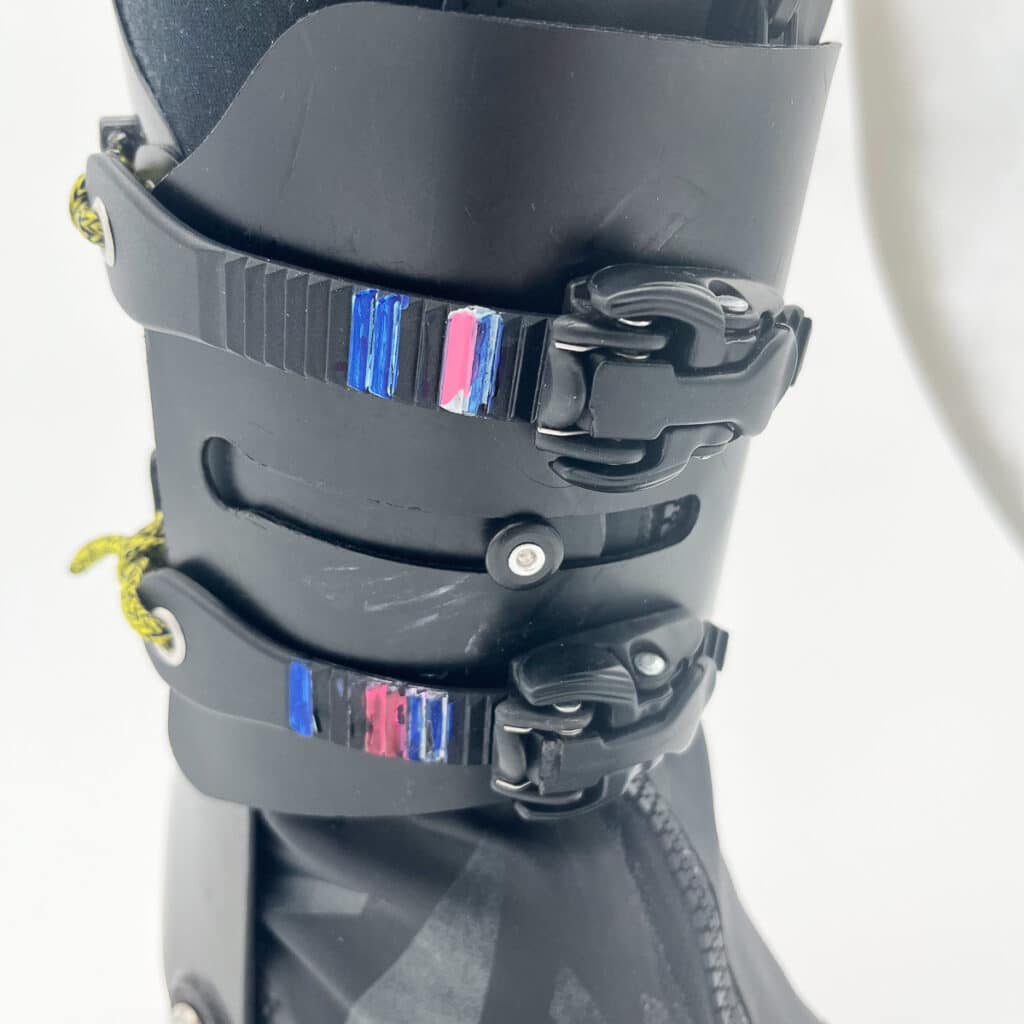
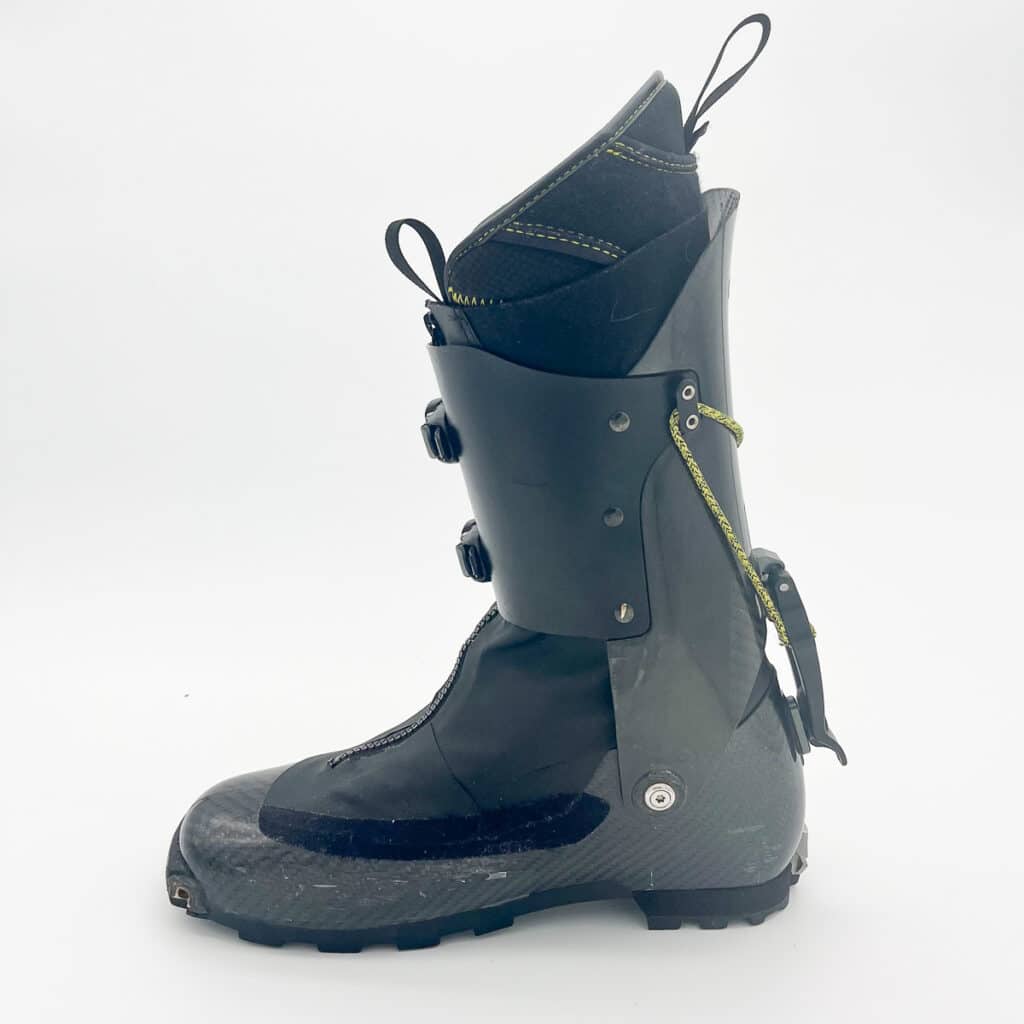
The upper cuff is another blend of novel ideas and designs similar to other race boots. The walk/ski lever is plastic, interestingly, which I was extremely skeptical of. The only reason I can think of for the plastic lever is that it provides a bit of flex/damping in an otherwise very rigid package. Like many race boots, the lever actuates a string-style closure system, allowing for a single-motion transition. Uniquely, the strings attach to dual ratchet straps, providing greater surface area and security than the usual string and hook systems of race boots. It also provides for adjustable tightness with the ratchet buckles, eliminating the need for tying and untying knots. The overlap of the cuffs is the only plastic shell component, and it uses a “shouldered” bolt and channel to lock the cuffs together in the proper orientation. The cuff has a simple shape like the lower but adds a layer of UD (unidirectional)carbon from the pivots to the top-back-center for added stiffness. The pivots use T20 hardware and have a mm or two of play, which seems normal for carbon-cuffed boots.
Marshal has a Fischer/Palua liner in the boot, which I imagine is very similar to the Palua liners PG supplies. Notably, they are full liners with a tongue and full rear, rather than the booty or tongue-only liners many race boots use. This makes for a much more “normal” skiing feel but is essentially the only thing adding friction to the otherwise essentially friction-free walk mode.
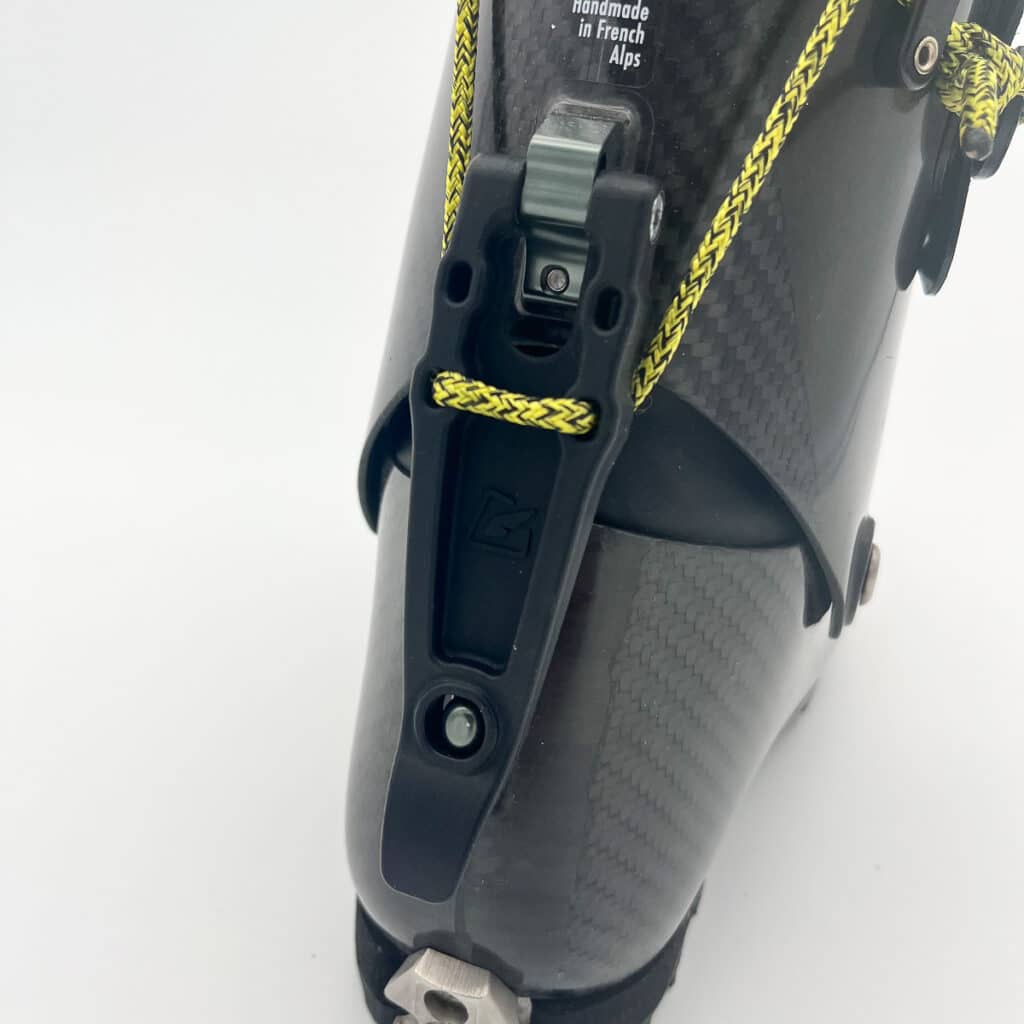
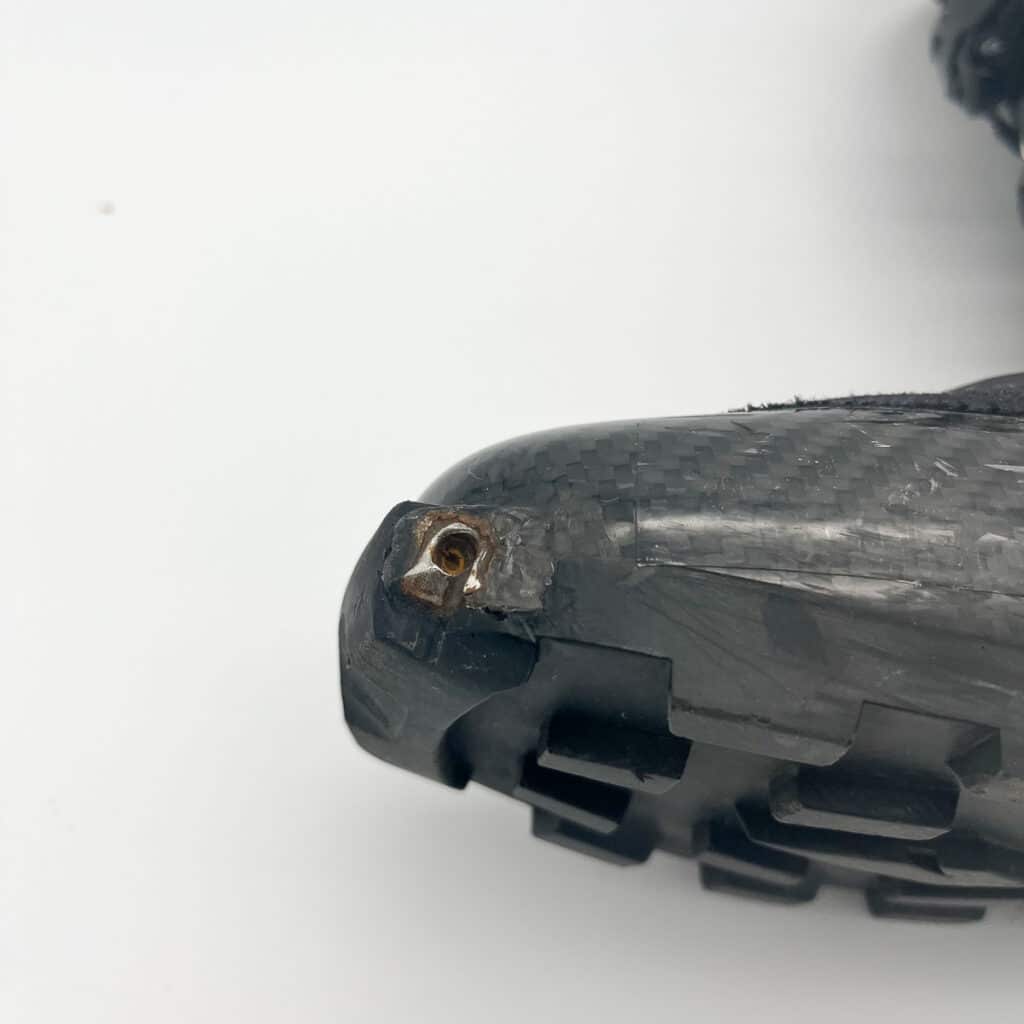
Fit
Fit is a fickle beast in a boot with a full carbon lower shell. As carbon is not a thermoplastic material, normalmanipulations are impossible. Paired with a thin liner, they really need to fit pretty well out of the box—there isn’t much to be done after purchasing.
Knowing this, PG is among the only boot makers to provide unique shell sizes in the middle of the size range (26-28 all come in unique half and full-shell sizes). The fit is average to wide throughout, with a low height in the toe box and medium instep. Overall, the fit is rather similar to the Dynafit DNA, but the heel strap does a much better job of eliminating heel lift.
Testing Notes
I’ll be honest, I didn’t ski these much: too tight.
I did get enough time in them to continue my interest as well as answer my questions regarding the performance of the Mountain. For starters, I quickly learned at least one reason that tall, zippered gaiters aren’t the norm on other race boots; they are both challenging to close and a significant failure point. Marshal has a retrofitted zip on one of his boots, and I can see how it would be easy to damage these long zips. On the plus side, PG has replacement gaiters and most other parts available.
I was super impressed with the Mountains’ lower foot fit and hold. It is truly superb, especially for such a minimal “buckle” system. The limitation of the lacing system may be that it doesn’t add stiffness with a rigid link across the throat of the boot to prevent bowing, but as I’ll get to in a minute, stiffness isn’t lacking here. The dual-adjustable approach is really nice, allowing for a slightly looser forefoot adjustment while a snug ankle strap holds down the heel. A final limitation of this system is that the internal nature of the lacing means that mid-tour adjustments require dealing with the gaiter zips and undoing the top buckles. Set and forget is the ideal here.
Let’s talk about walking and skiing. The walking discussion can be kept brief. This is a truly low-friction walk mode, on par with any other race boot, with the added friction of a full(albeit super minimal) liner. Anyone who tells you “such and such 1300g boot has almost no friction in walk mode” hasn’t experienced a race boot. It’s different.
Skiing is obviously the point of interest with the Mountain. Full-carbon upper and lower boots are usually absolutely nothing to write home about. The string-style upper closures on other race boots lack micro-adjustments, making it challenging to get precise wrapping and support from the upper cuff. Additionally, other race boots I’ve tried (carbon cuff, plastic lower) are often harshly stiff, then fold or collapse when overdriven. Perhaps this is a commonality among full carbon boots, but I have yet to find a “folding” point with the Mountain; it’s more of a linear semi-stiff flex for a cm or two of cuff-top motion that finishes with an absolute brick wall. The ratchet strap system works really well. Having the micro-adjustment to achieve a snug, no-play fit between my lower leg and the liner makes for significantly more nuanced control and precision when skiing.
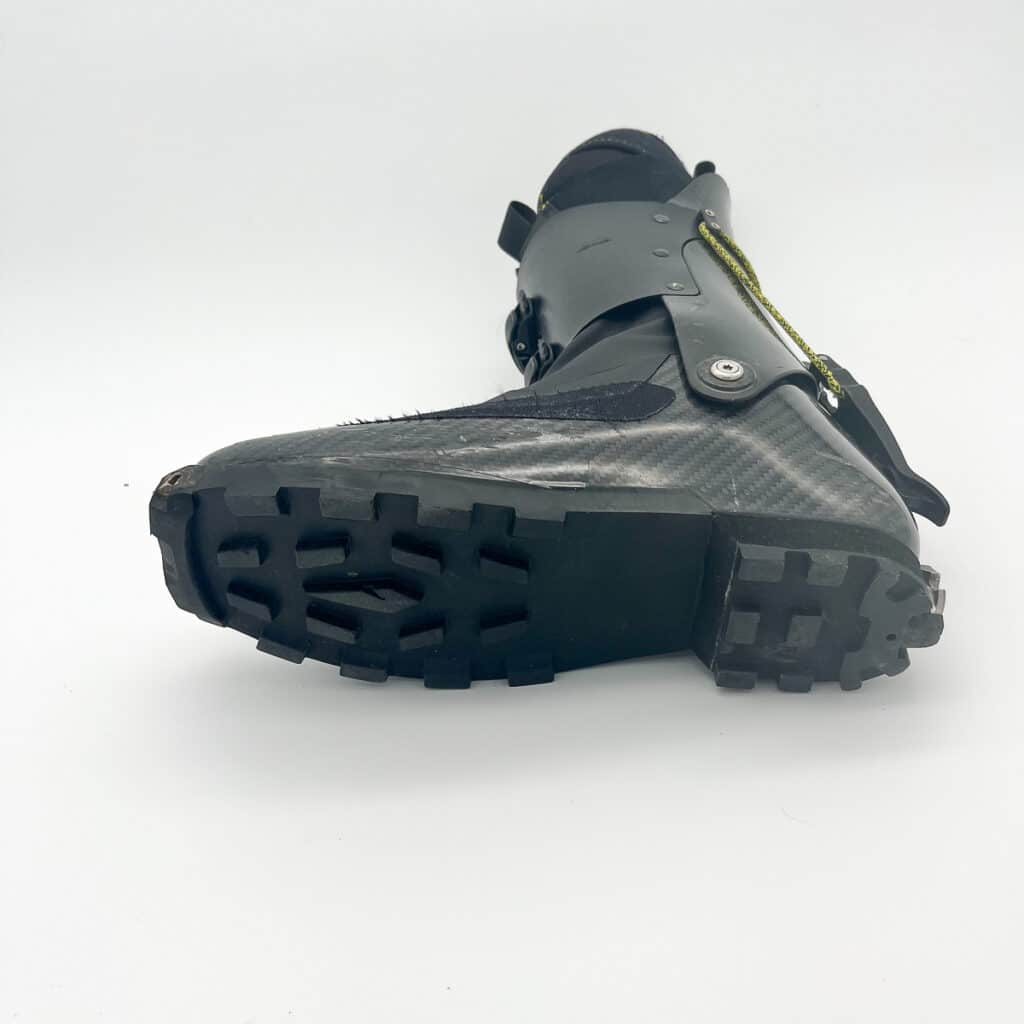

Combining the above factors of stiff finishing flex and excellent buckle/lacing systems provides the answer I was looking for regarding ski performance. An updated use case is warranted with caveats. The big update to my ultralight boot use case, as provided here, is the ability to ski mid-sized skis in less-than-perfect conditions. At the upper limit of this was a marginal conditions (poor freeze and wet debris) ski run on Teton pass with the Mountains and Heritage Lab BC100s in 180cm. The previous day, I skied a similar run in similar conditions with my La Sportiva Stratos Hybrids. The Mountain felt like an appropriate fit for the day (borderline), while I felt a little nervous any moment I carried speed in the Stratos. The added contact area and gained precision from the more robust cuff seemed to be the biggest factor on these days. I felt much more in control wearing the Mountain.
Another notable test day, and perhaps a more appropriate pairing, was the 177cm Head Crux 105 (this ski is more like6cm shorter than the 180cm BC110), which weighs something like 1320g. A windy spring storm made for a mix of firm, dirty snow and pockets of grabby new snow. Challenging conditions regardless of gear. While I found the rigidity somewhat fatiguing over 4000 ft of mostly firm skiing, I gained confidence throughout the descent to carry speed and trust the support of the Mountains when encountering grabby patches. With a better all-day fit, I could see myself taking the Mountain for longer linkups in consequential terrain, as well as for some of my favorite days of springtime skiing in the more obscure and off-the-beaten-path Teton runs.
Performance-wise, I can see a strong argument for the Mountain on a longer expedition-style trip where “ski mountaineering” is on the docket. I’ve always been remiss to bringsuper light boots with non-full liners on trips like this as it seems like a recipe for cold feet and feeling like an idiot with frostbitten toes or terrified to ski an exposed slope in poor conditions. The performance is certainly adequate with the Mountain, although warmth is a major concern due to the thin liner, and my understanding is that carbon is a poor insulator relative to Grilamid. All that being said, durability seems to be a massive caveat here. The internal lacing, plastic walk mode lever, fragile gaiter zip, and, in general, fullcarbon construction all give me great concern in the context of an expedition. For day-to-day use, Pierre Gignoux offers a variety of replacement parts, and seemingly, as long as the shell doesn’t break, most other bits are fixable or replaceable.
One last note: the Mountain offers surprisingly good crampon compatibility. The heel lever zone is a little concerning, with a narrow lip and some interference from the ski/walk mode stud. But with careful adjustment and a tight fit, it seems to work just fine with most crampons.
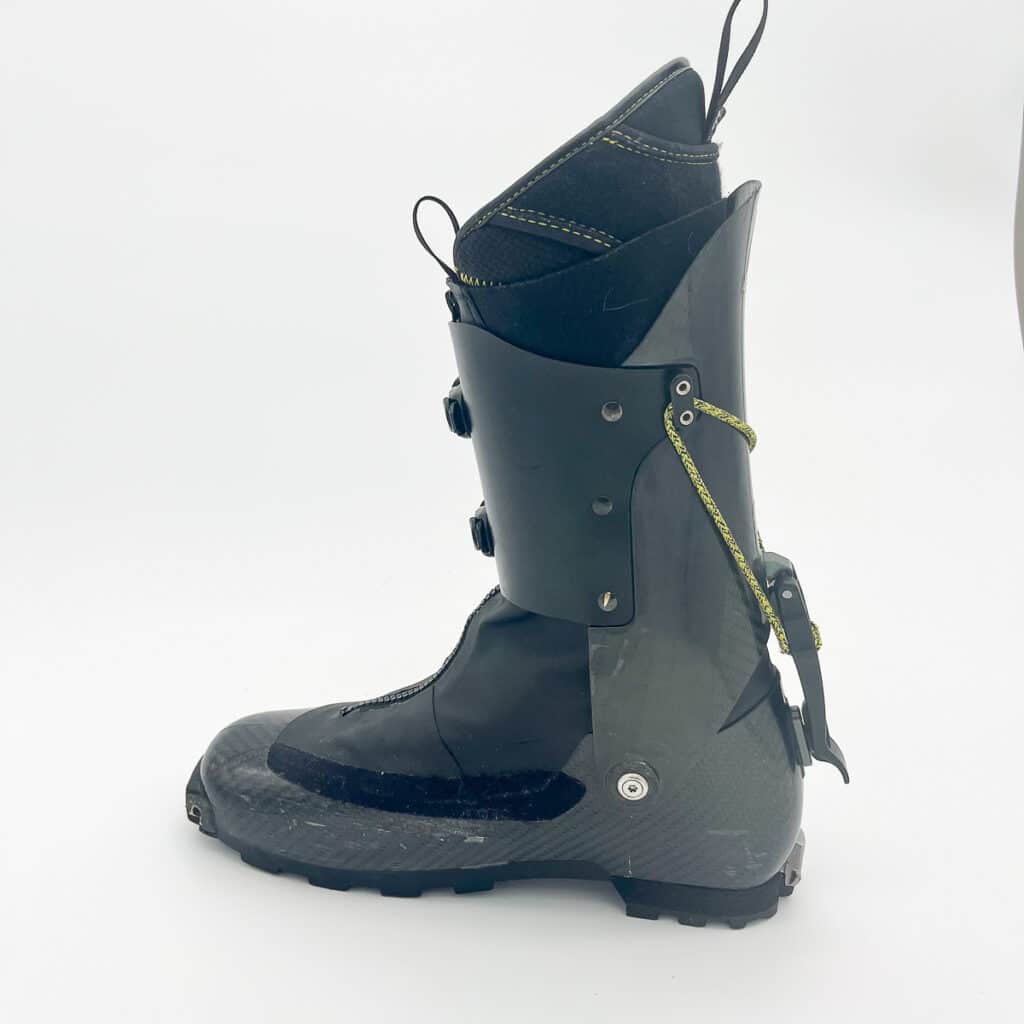
Conclusion
I’m not sure I have any revelations to offer at the conclusion of this review. On the one hand, a more downhill skiing-oriented, race-weight boot is pretty damn cool. On the other hand, a $2k ski boot that is more likely than not to break more easily and quickly than boots at half the price and 15-20% heavier is a tough pill to swallow. The only certainty I can provide here is that the Mountains are an impressive piece of handcrafted ski gear that is worth appreciation and checking out for anyone who appreciates nice ski gear. Should every dedicated ski tourist own a set? Probably not. Like anything, prior experience shapes each of our perceptions of these fringe products in particular. For a skimo racer accustomed to skiing a full race setup, the Mountain may feel like a huge upgrade, while someone skiing a Zero G or 50/50 boot will, on most days, feel like the Mountain is wildly undergunned and terribly harsh. Hopefully, my experience and some nice photos can help those of us who don’t live close to an awesome ski shop that carries stuff like this get a better picture of what a boot like this is like.
Thanks again to Marshal for his generosity in sharing these boots with us!
Weight: 780g (size 28)
BSL: 302mm


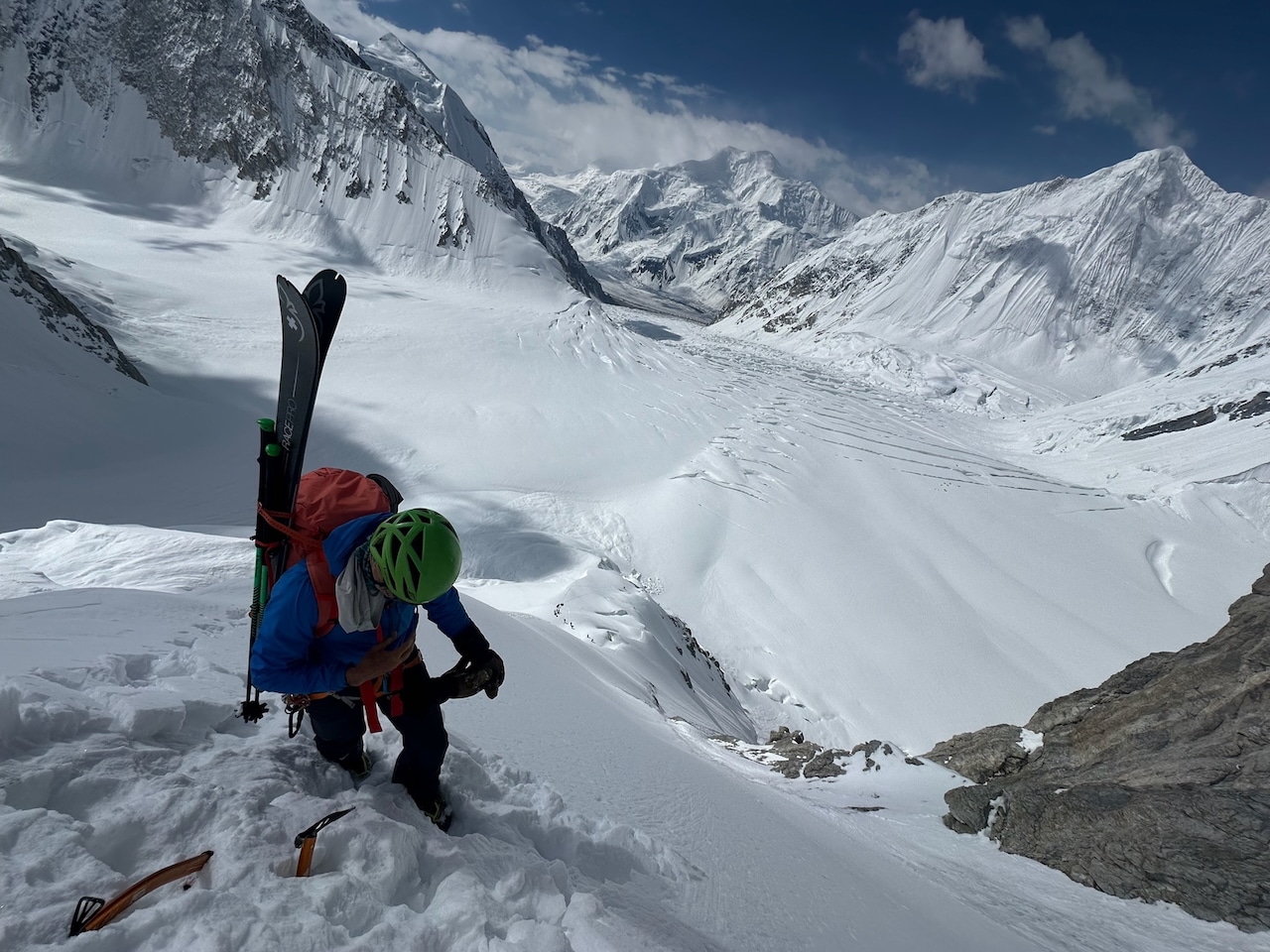

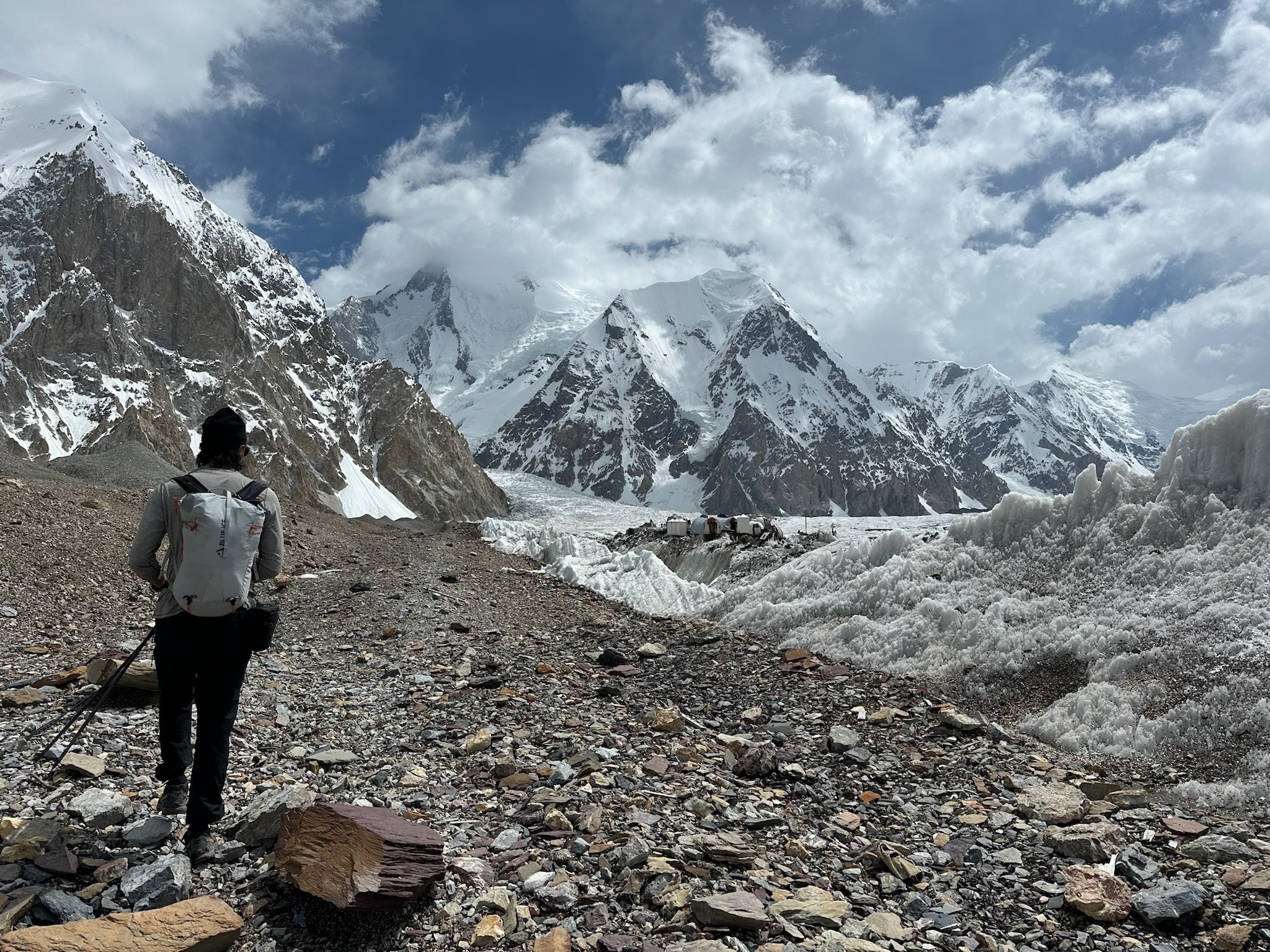
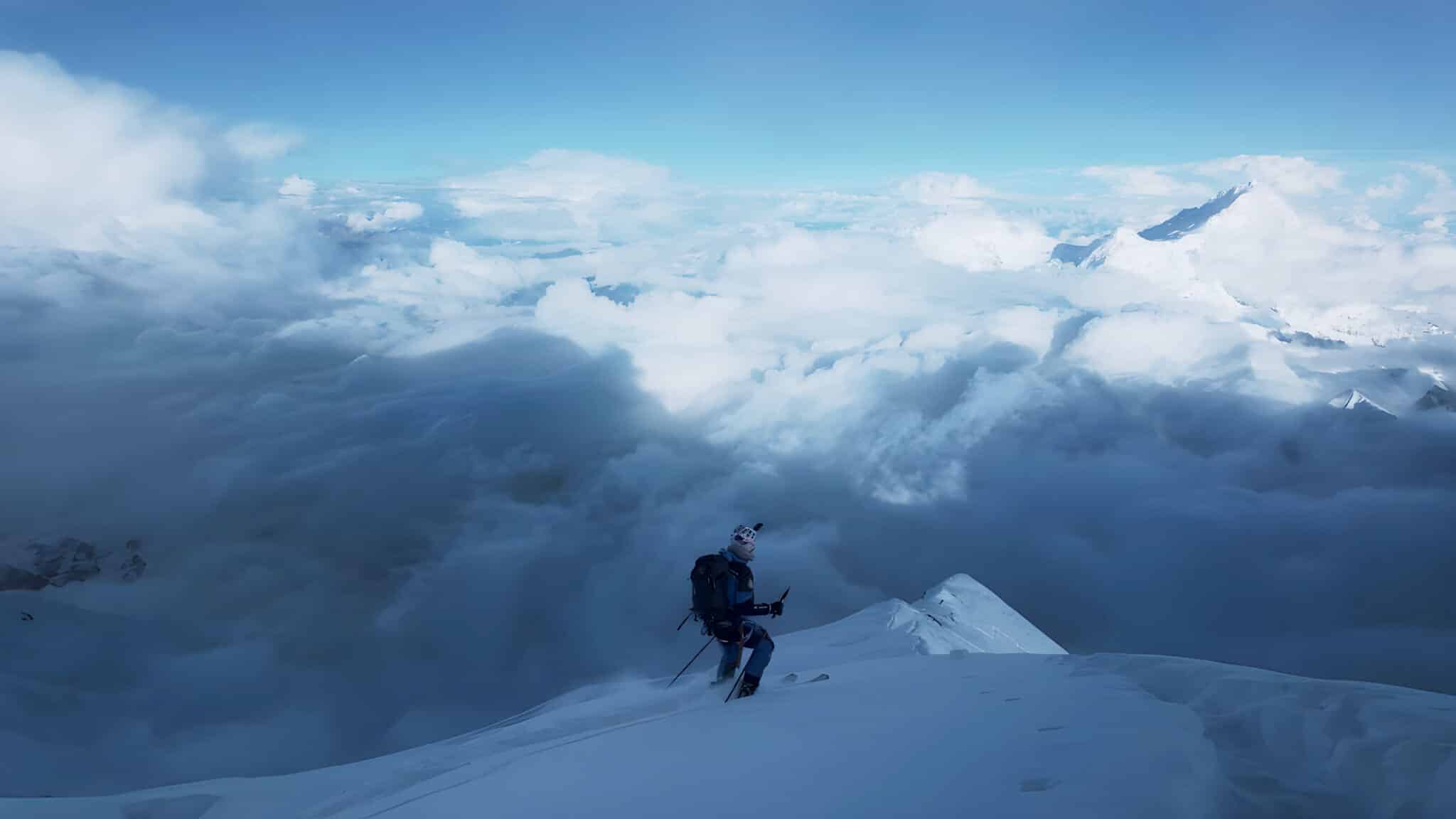
Leave a Reply
You must be logged in to post a comment.